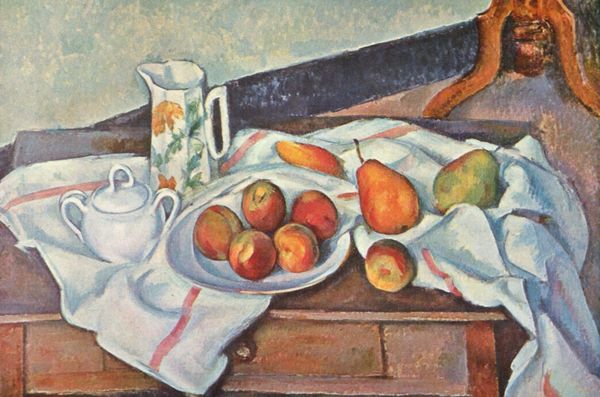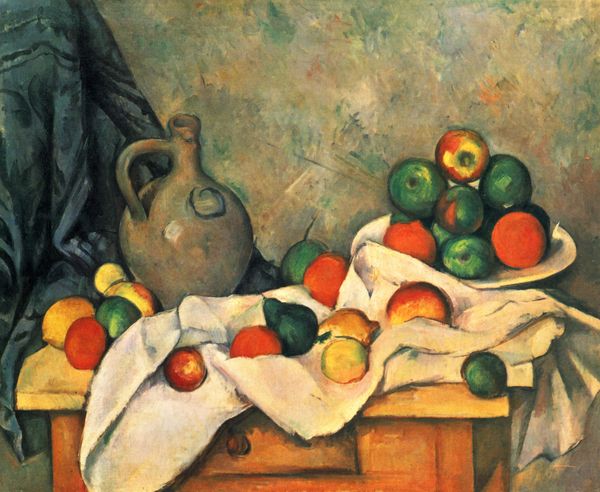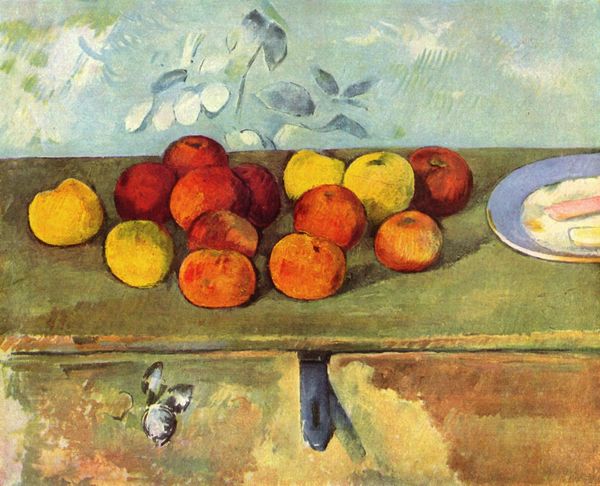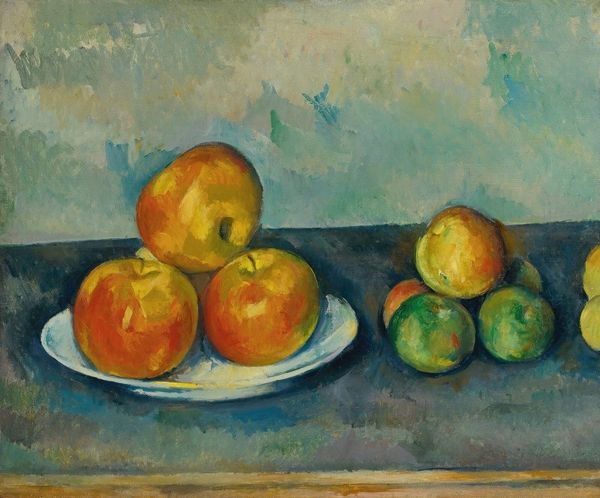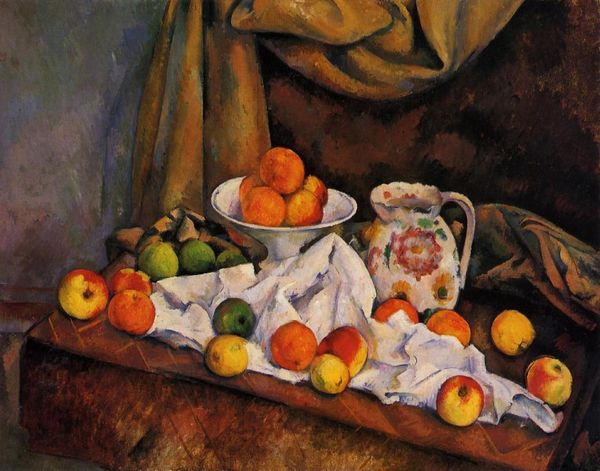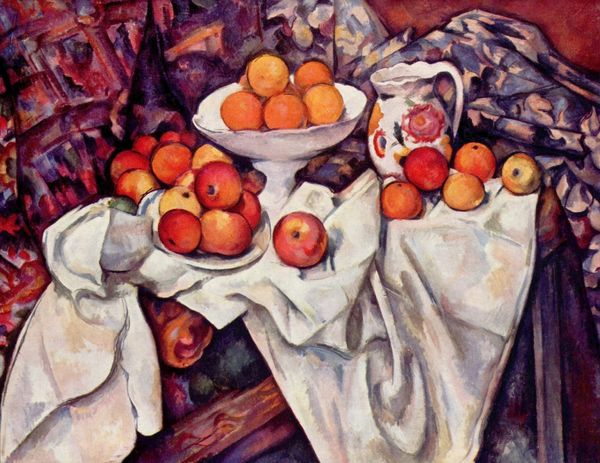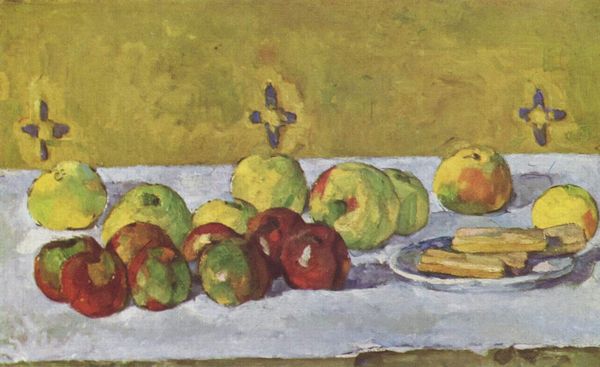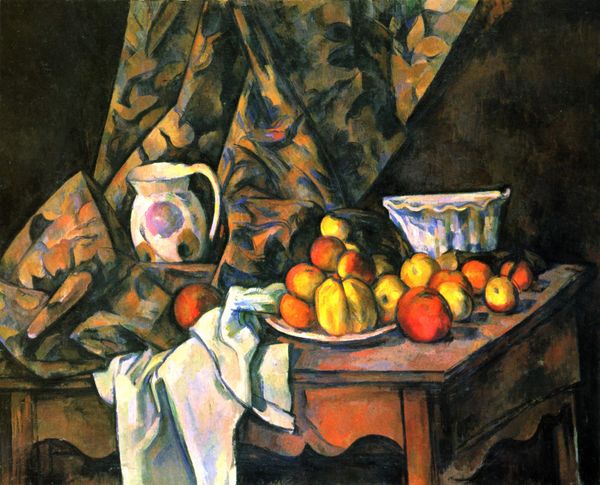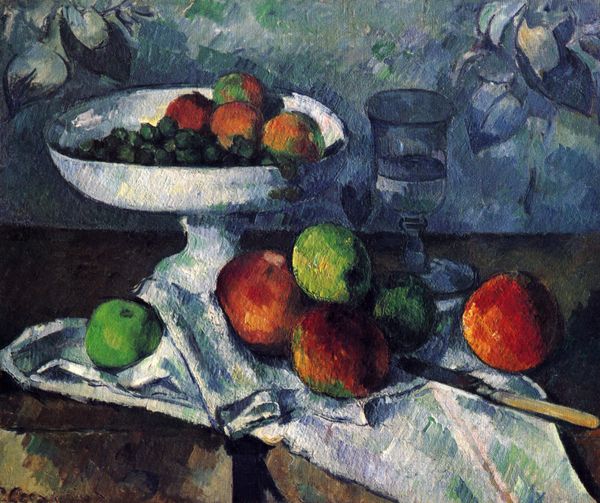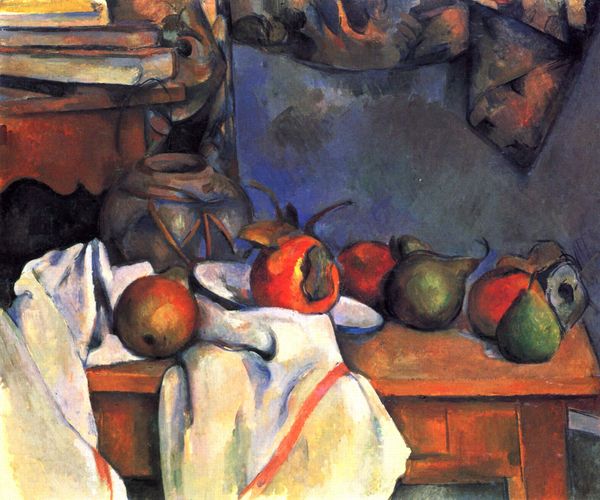
painting, oil-paint
#
gouache
#
painting
#
impressionism
#
oil-paint
#
oil painting
#
fruit
#
post-impressionism
Dimensions: 43 x 53 cm
Copyright: Public domain
Curator: It strikes me as homely and slightly melancholic. A familiar scene, yet with an underlying sense of… unease? Editor: Here we have Paul Cézanne's "Still Life with Apples and Fruit Bowl" from around 1882. The painting, executed in oil, showcases Cézanne’s exploration into the formal possibilities of the still life. Curator: I'm immediately drawn to the handling of the paint. The visible brushstrokes, almost blocky, constructing the forms. It’s less about mimicking reality and more about revealing the act of making. Look how he's flattened space – almost like a sculptural relief! And the slightly muted colors; they almost neutralize the vibrancy you'd expect from ripe fruit. It really begs the question: is it just about the subject of "fruit" or is it more about the "objecthood" of the painting itself? Editor: Indeed. And consider this: Cézanne's post-impressionistic approach challenges traditional academic painting, making the work about not only observing the world, but how to see it from various perspectives. Take for example the art market of the time and how it heavily influenced these avant-garde artists like Cézanne to take on radical ways to deconstruct painting. They were actively dismantling representational norms established for centuries. Do you think the somewhat haphazard arrangement contributes to this disruption of bourgeois aesthetics? Curator: Precisely! There is a palpable sense of labor involved, breaking with the idealized and illusionistic surfaces. It hints at a break with consumerism; the fruit aren’t glistening advertisements, but objects analyzed, almost deconstructed, from a producer's standpoint, don't you think? I wonder how the rising accessibility of paints, plus changing production processes influenced this direction… Editor: A good question! I suspect the development of Impressionism and post-Impressionism as art movements happened precisely to address and distinguish against the rise of capitalist image culture and commodity consumption, especially during France’s Third Republic. Curator: Thinking about the way these works engage with modern industrial materials definitely provides food for thought! Editor: Absolutely. I see how his "still life" genre paintings functioned as critical engagements within the art world’s institutional structures, where they held an alternative view against commodity culture in society.
Comments
No comments
Be the first to comment and join the conversation on the ultimate creative platform.

